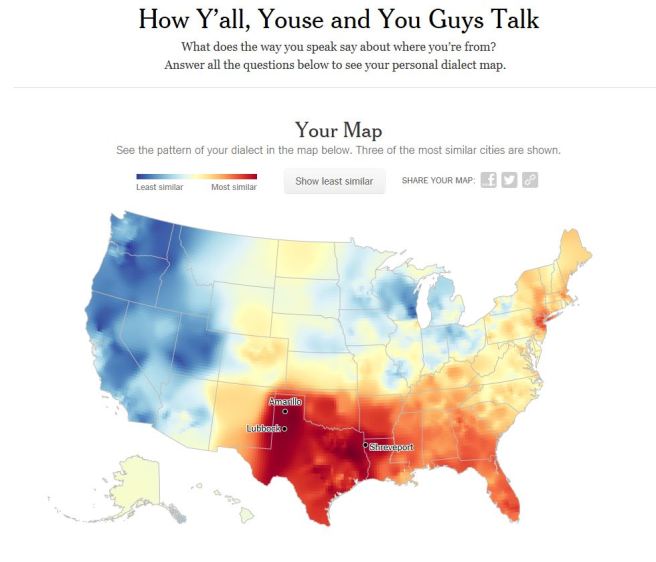
A couple of months ago, visiting a successful and experienced writer friend he told me, he read one of my pieces. I still am honored and flattered he took the time. He has an amazing way of complimenting and encouraging me – but also bringing on constructive criticism which I apparently deserved. Just this time I had no idea what he meant when he told me: “You have only one character voice.”
— ?? —
I was a little shocked. Not that I didn’t believe him, I just couldn’t believe it.
He is a wonderful mentor and of course took the time to explain to me what he was talking about:
All of my characters talk the same way. I frowned. I know my characters in and out, I know their looks, their abilities, their character, and personalities, whenever I write about them I can nearly hear their voices in my head – and still, they all talk the same?
After my visit I went back to the piece he was talking about – and I wasn’t half through I thought I understood now what he was talking about.
Now: What do I need to do to change that?
I do what I always do in such a case: RESEARCH…
************************************************************************************
On “Now Novel” I found an interesting and very helpful article which helped me define the problem I apparently have: “Talking about your Character: Voice.”
- What is character voice?
- Thinking about dialogue
- Separating character voice and author voice
- How to develop the voices of your characters
In four different chapters, the article not only defines my problem but offers a helpful and informative solution. It’s easy to read and explained in a simple and understandable way.
************************************************************************************
On Joe Moore’s “The Kill Zone” blog I read an article, written by Jordan Dane: Five Key Ways to Create a Character’s Distinct Voice
Jordan offers the following, excellently explained five ways to create a character’s voice:
- Word Choices
- Confidence Level
- Quirks/Mannerism
- Internal/External Voice
- Metaphors/Similes/Comparisons
Each one of them is explained in details and is logical and, as I think, easy to learn. We’ll see.
*****
As a bonus, Jordan offers a link to a New York Times online test, which of course I took. And this is my result: Look at that… according to this test I’m a Southern Girl. 😀
**********************************************************************************
“The Editor’s Blog” offers a variety of advice in making the voices of characters sound different. I found this blog post interesting and helpful as well. Variety in Character Voices
- Use different words
- Use different sentence patterns
- Add humor to one character
- Cut of speech or thought
- Let a character ramble
- Have characters pay attention to different things
The article is short, simple and precise. I think it’s adding to my learning in this matter.
*************************************************************************************
The “NY Book Editors” blog provides us with another interesting article with six excellent tips: Character Development: How to Create a Consistent Voice
- Create a Backstory for Each Character
- Do a Character Study
- Hone Their Internal Dialogue
- Research How People Speak Naturally
- Focus on Authentic Dialogue
- Interview the character
Each of the tips includes a further explanation as well as an exercise, which I consider very helpful and I’m looking forward to learning more by doing them.
***********************************************************************************
The “Writability”-blog delivers us an excellent definition of the “character’s voice” by giving us examples and makes us feel how important the different character voices are for our writing.
The article can be read here: http://avajae.blogspot.com/2011/09/defining-character-voice.html
*************************************************************************************
Jackie Cangro has published a blog post on “The Writer’s Block” blog, providing us with the seven elements of our “character’s voice”:
- Style
- Tone
- Personality
- Perspective
- Authenticity
- Consistency
- Originality
She defines each of the elements in details and delivers descriptions which are easy to follow. I very much appreciate the easy read and learn-part of this blog post. The entire post can be found here:
https://writersblock.loft.org/2013/08/14/2641/finding_your_characters_voice
************************************************************************************
K.M. Weiland has published a video post on her blog “Helping Writers become Authors.” It’s easy to follow and very educational.
“How to find your character’s voice” not only shows us the video but also delivers us the video transcript and help us understand the difference between authorial and character voices.
It helped me a lot to enter this topic and understand the basics.
The transcript and video can be found here: http://www.helpingwritersbecomeauthors.com/how-to-find-your-characters-voice/
*************************************************************************************
On the “Gizmodo”-Blog I found a post, written by Charlie Jane Anders “All Your Characters Talk The Same — And They’re Not A Hivemind!”
This article too is very educational and gives us eight tips and hints to play with our character voices. Each of the tips comes with a detailed explanation and helps us develop our characters:
- Listen to how people talk
- Try to “hear” your characters’ individual voices
- Realize your characters are not talking to you, or directly to the reader
- Try giving each character a few unique verbal tics, or habitual words
- Go one step further, and give them catch phrases and stuff
- Realize that you may have, at most, three or four characters “voices” and refine those
- Vary your sentence lengths, and play with punctuation
- Adjust the French/Anglo-Saxon mix
*************************************************************************************
Each of this articles and blog posts has helped me a lot to get at least an idea on how to do better and give each of my characters an individual voice instead of them sounding like me.
But most of all I owe my writer friend a HUGE Thank you! He was the reason I started thinking about a problem I didn’t know I have! Thank you, Jim Spencer.


Reblogged this on mallie1025.
LikeLike
This is so important. Great post and I reblogged it. This problem actually takes a lot of practice to accomplishment distinctive individual characters. I try to use characters from people in my life or mixtures of them so that I make sure it’s them talking and not me talking through them. Keep ages in mind and levels of education. A teacher wouldn’t say ‘ain’t’ even in conversation and a Grandma wouldn’t say ‘Cool!’–except me cuz I’m a cool grandma. I hate outlines but this is where it helps–making character outlines and establishing their quirks and character traits.
LikeLike
Awesome collection of resources on this topic. Thank you!
LikeLike
Thanks for that, Aurora. And all the resources. I can see a lot of research coming up”
LikeLike
Here’s another article (from my archives) you might like Aurora:
https://thestoryreadingapeblog.com/2015/03/31/dun-writin-now-whut-45-a-series-by-susan-uttendorfsky-owner-of-adirondack-editing/
LikeLike
Reblogged this on Chris The Story Reading Ape's Blog and commented:
A great informative post from Aurora – It’s also loaded with links to other informative posts and resources 😀
LikeLiked by 1 person
Excellent, Aurora! We are always shocked when we find that we’ve fallen into a rut or pattern with dialogue. Thanks for sharing!
LikeLike
Thanks, Aurora! Sharing and saving this one.
LikeLiked by 1 person
Thank you very much for your comment, stepping in and reading and sharing the post. It’s an honor for me, Bette!
LikeLike
Thank you, Aurora. These tips are most helpful, especially since I’m in the midst of my new novel 🙂
LikeLiked by 1 person
You’re very welcome Tina. I’m happy to read that my researched posts are helpful at least a little bit! 🙂
LikeLiked by 1 person
Reblogged this on The Owl Lady.
LikeLiked by 1 person
Thank you so much for the re-blog!
LikeLike
Fantastic post. I’d love to see regular readers (who do not write) read this so they get a better idea of how many different things a writer has to consider when we create stories. There are so many different details we have to think about and work out along the way.
LikeLiked by 1 person
You’re right. I too thought I needed to learn more about this. That’s why I created it.
LikeLike